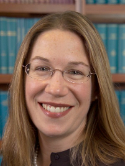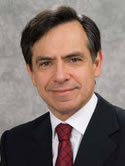Neither FDG-PET nor CT can distinguish between a pathological complete response and an incomplete response after neoadjuvant chemoradiation in locally advanced rectal cancer: A prospective study Journal Article
| Authors: | Guillem, J. G.; Ruby, J. A.; Leibold, T.; Akhurst, T. J.; Yeung, H. W.; Gollub, M. J.; Ginsberg, M. S.; Shia, J.; Suriawinata, A. A.; Riedel, E. R.; Mazumdar, M.; Saltz, L. B.; Minsky, B. D.; Nash, G. M.; Paty, P. B.; Temple, L. K.; Weiser, M. R.; Larson, S. M. |
| Article Title: | Neither FDG-PET nor CT can distinguish between a pathological complete response and an incomplete response after neoadjuvant chemoradiation in locally advanced rectal cancer: A prospective study |
| Abstract: | OBJECTIVE:: To prospectively compare the ability of flourodeoxyglucose- positron emission tomography (FDG-PET) and computed tomography (CT) to identify a pathological complete response (pCR) in patients with rectal cancer treated by chemoradiation. BACKGROUND:: A major obstacle in pursuing nonoperative management in patients with rectal cancer after chemoradiation is the inability to identify a pCR preoperatively. METHODS:: A total of 121 patients with rectal cancer were prospectively enrolled. FDG-PET scans and helical CT scans were obtained before and after neoadjuvant chemoradiation. Consensus readings of PET and CT scans were used to classify certainty of disease (5-point confidence rating scale). The ability of PET and CT scans to accurately distinguish a pCR (ypT0) from an incomplete response (ypT1-4) was estimated using the area under the receiver operating characteristic curve (AUC). RESULTS:: Of the 121 patients, 26 (21%) had a pCR. PET and CT scans were equally inadequate at distinguishing a pCR from an incomplete response (AUC = 0.64 for both, P = 0.97). Among the 26 patients with a pCR, 14 (54%) and 5 (19%) were classified as complete responders on PET and CT scans, respectively. Among the 95 patients with an incomplete pathological response, 63 (66%) and 90 (95%) were classified as incomplete responders on PET and CT scans, respectively. None of the individual PET parameters, including visual response score, mean standard uptake value (SUVmean), maximum SUV (SUVmax), and total lesion glycolysis, accurately distinguished a pCR (AUCs = 0.57-0.73). CONCLUSIONS:: Neither PET nor CT scans have adequate predictive value to be clinically useful in distinguishing a pCR from an incomplete response and, therefore, should not be obtained for the purpose of attempting to predict a pCR after neoadjuvant chemoradiation for rectal cancer. Copyright © 2013 Lippincott Williams & Wilkins. |
| Keywords: | adult; cancer chemotherapy; treatment outcome; treatment response; aged; aged, 80 and over; middle aged; major clinical study; cancer localization; advanced cancer; area under the curve; comparative study; neoadjuvant therapy; positron emission tomography; prospective study; prospective studies; radiopharmaceuticals; polymerase chain reaction; adenocarcinoma; computer assisted tomography; tomography, spiral computed; conservative treatment; fluorodeoxyglucose f 18; fluorodeoxyglucose f18; positron-emission tomography; response; rectal neoplasms; rectum cancer; glycolysis; roc curve; computed tomography; receiver operating characteristic; pet scanner; rectal cancer; rectum; preoperative radiotherapy; chemoradiation therapy; adjuvant chemoradiotherapy; chemoradiotherapy, adjuvant; nonoperative approach; wait and see |
| Journal Title: | Annals of Surgery |
| Volume: | 258 |
| Issue: | 2 |
| ISSN: | 0003-4932 |
| Publisher: | Lippincott Williams & Wilkins |
| Date Published: | 2013-08-01 |
| Start Page: | 289 |
| End Page: | 295 |
| Language: | English |
| DOI: | 10.1097/SLA.0b013e318277b625 |
| PROVIDER: | scopus |
| PUBMED: | 23187748 |
| DOI/URL: | |
| Notes: | --- - "Export Date: 1 August 2013" - "CODEN: ANSUA" - "Source: Scopus" |
Altmetric
Citation Impact
BMJ Impact Analytics
MSK Authors
Related MSK Work
















